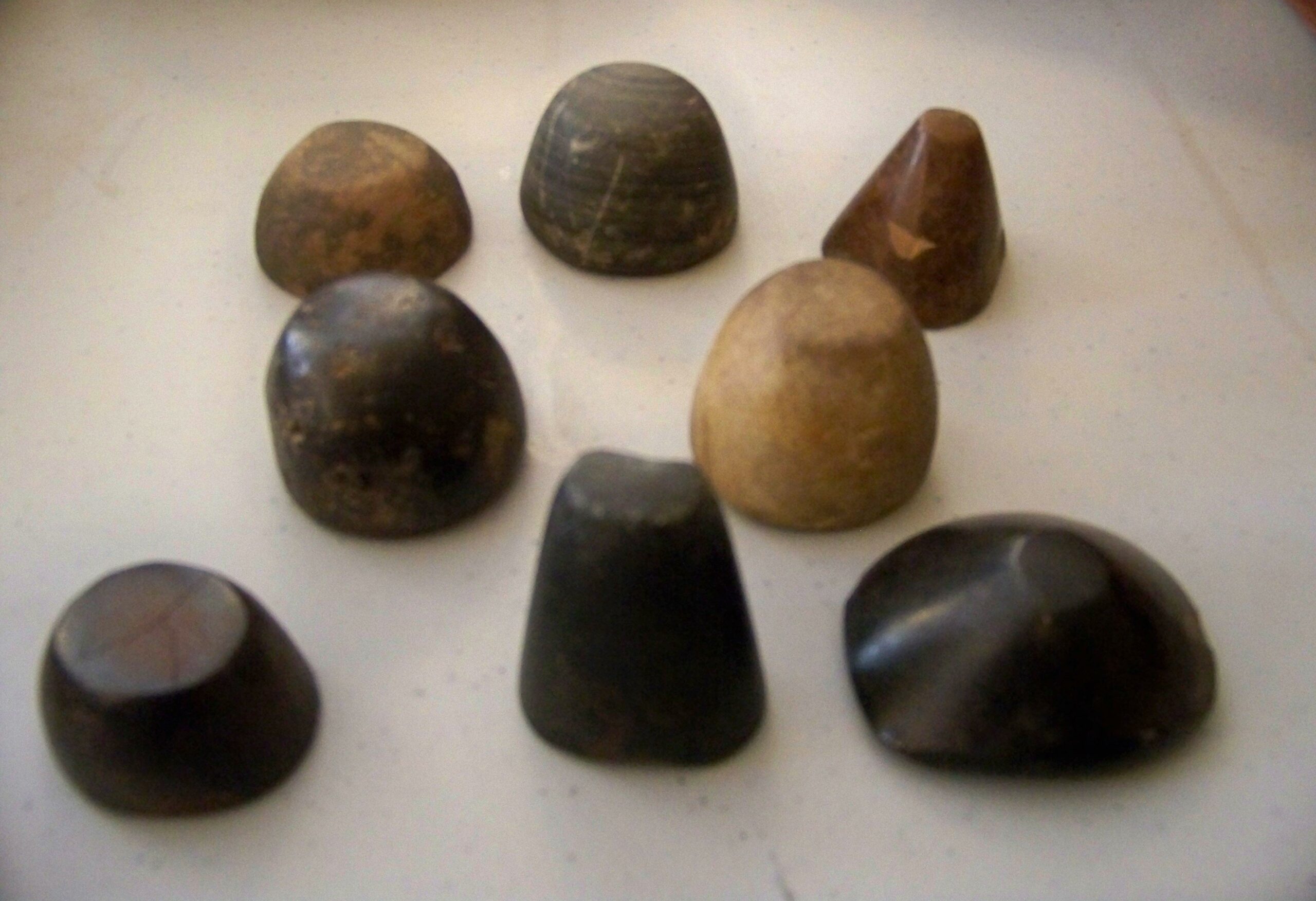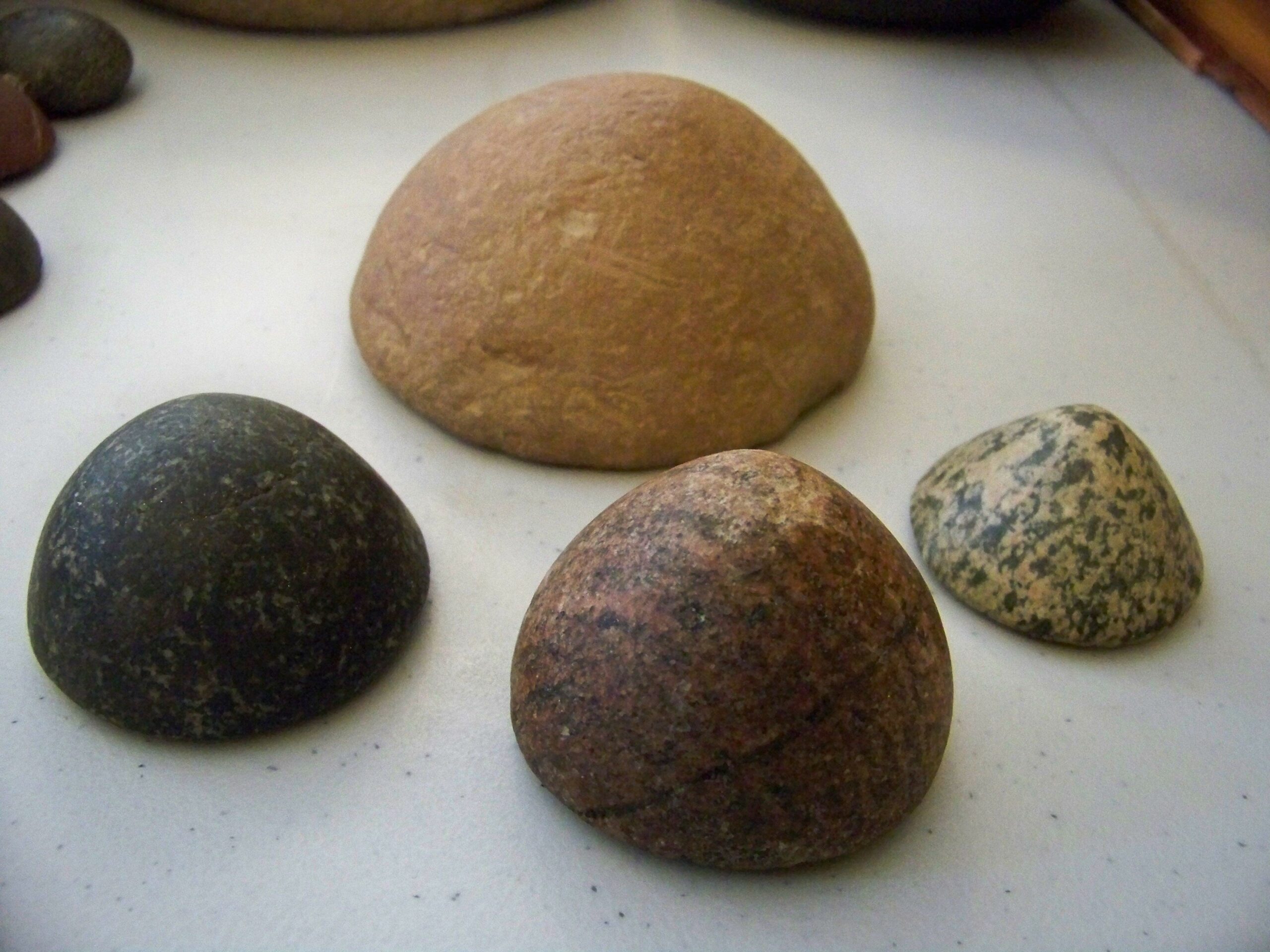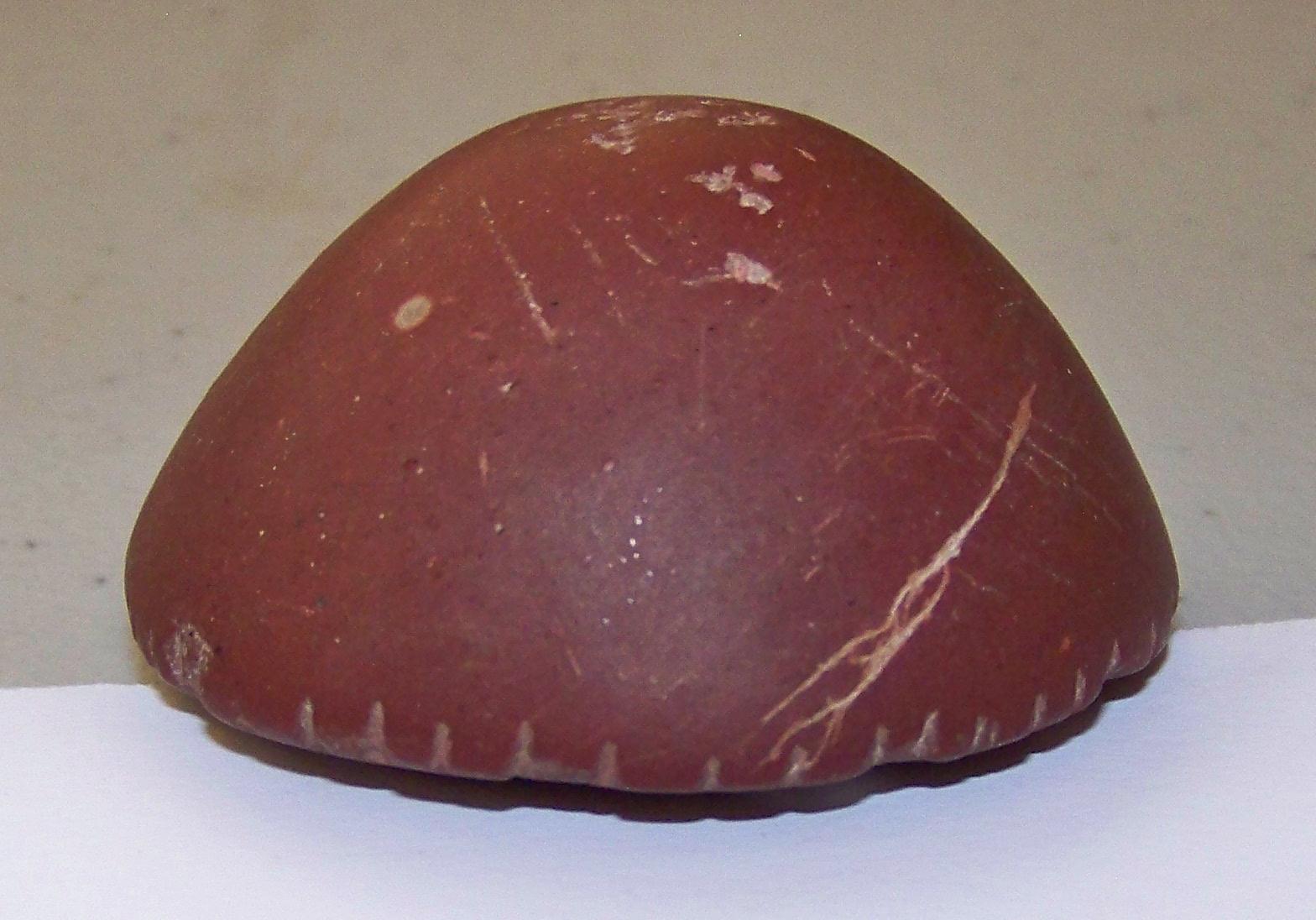The cone or pulping plane is found primarily on Archaic sites across the United States and Mexico. Cones range from nicely shaped and smoothed to crude. Polish may be the result of smoothing, but is always enhanced by use-wear. Cones are sometimes unrecognized or may be seen as a broken celt pole and go unreported.

Cones or pulping planes are typically heavy, hand-sized artifacts that are cone or hemispherical shaped that may have a conical or flattened conical top and a flat bottom. The edge of the planing surface became dull through use and was often trimmed or resharpened repeatedly.
Some cones were flaked tools that appear smoothed through use (Left, from the collection of Jackie Fuller). The cone on the right has a rough exterior and is from the Mell collection at the University of Georgia.

This tool could be used as a plane to thin or remove rough spots on hiders or skins although indications from some sites suggest that it was used for crushing vegetable materials to obtain plant fibers for cord, rope, or weaving. It may have been used in some form of food preparation or other purposes.

This unusual artifact is fairly evenly grooved with a smoothed central surface, very suggestive of a grinding surface. It is perhaps a variant of a cone-like tool with a more aggressively notched cutting edge for grinding of leather smoothing in the tanning process. The top of this artifact is not conical, but more the shape of a biscuit discoidal. I know of no other similar artifact.